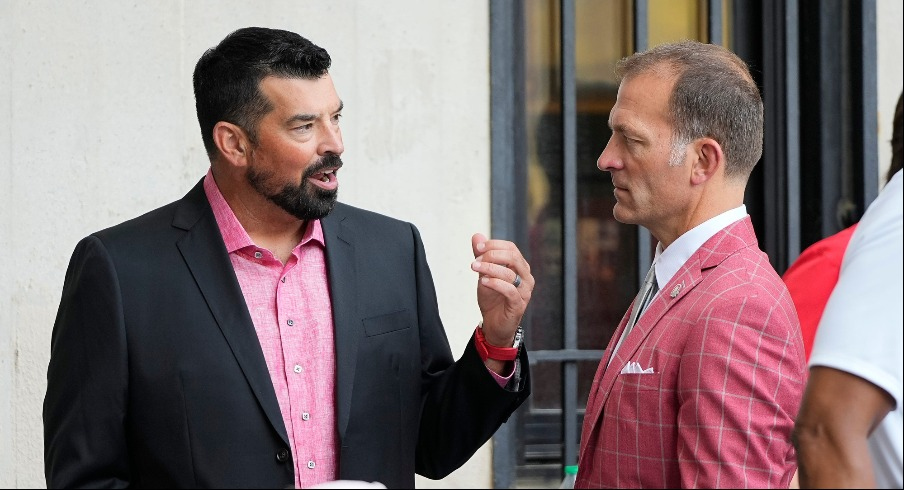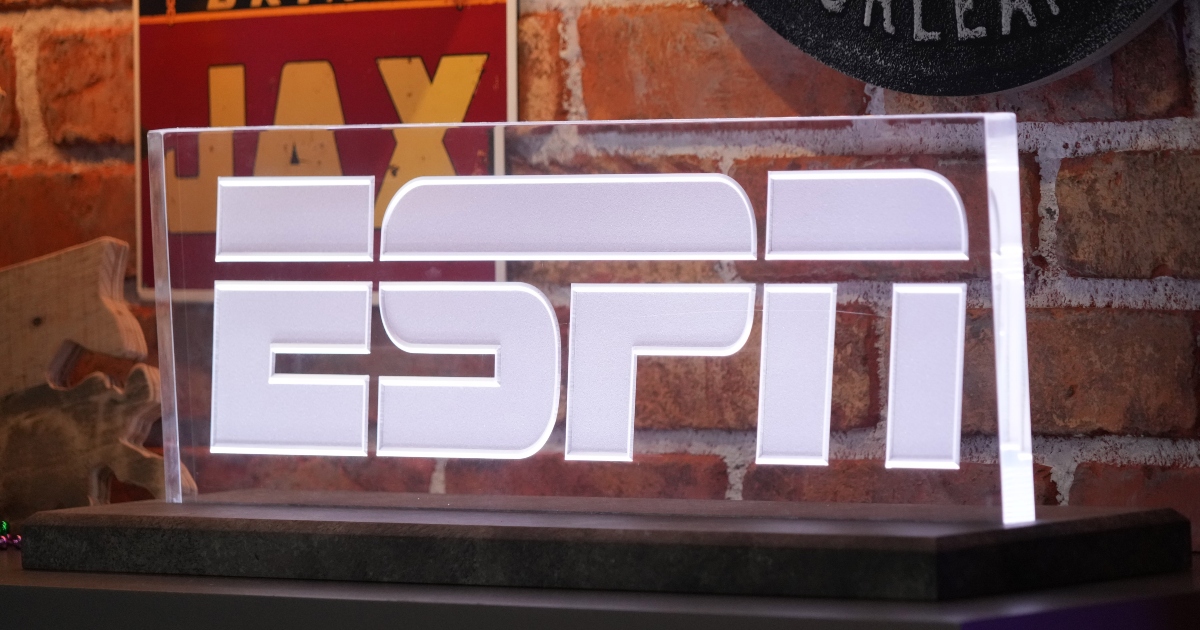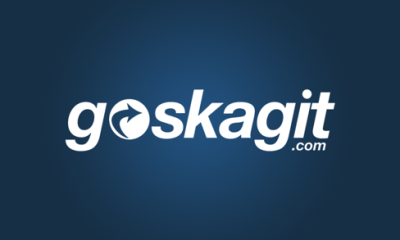NIL
The Weekender
Own the group chat with The Weekender, highlighting the biggest stories in college sports, standout writing from Eleven Warriors, and a glance at what’s next. HOUSE SETTLEMENT STABILIZES NCAA, APPEAL DELAYS BACK PAYMENTS TO ATHLETES AND CHALLENGES TITLE IX COMPLIANCE Following the landmark House Settlement announcement more than a week ago, paving the way for […]



Own the group chat with The Weekender, highlighting the biggest stories in college sports, standout writing from Eleven Warriors, and a glance at what’s next.
HOUSE SETTLEMENT STABILIZES NCAA, APPEAL DELAYS BACK PAYMENTS TO ATHLETES AND CHALLENGES TITLE IX COMPLIANCE
Following the landmark House Settlement announcement more than a week ago, paving the way for schools to provide directly compensation to athletes via revenue sharing and triggering the NCAA to award $2.8 billion in back damages to former athletes, NCAA president Charlie Baker offered thoughts on the case outcome earlier this week.
Baker was at a wedding when he heard the news and while the NCAA is an organization constantly laughed at by many for its incompetence and lack of any foresight whatsoever across numerous on-field and off-field fronts, Baker was relieved the settlement, ending three separate federal antitrust lawsuits, reached conclusion.
Speaking at the National Association of Collegiate Directors of Athletics convention on Tuesday, Baker told the group, “no one in this room needs to hear me say that this is one of the biggest changes ever in college sports. I hope you also understand that it’s a far better future than virtually every other alternative that could have been in front of us.”
“Blame whoever you wish to blame. But the simple truth is clear: College sports’ collective inability or unwillingness to change years ago put the entire enterprise at risk. Is the settlement disruptive? Very much so. But it is an opportunity for the D-I community to pay for back damages over 10 years, instead [of] triple that amount all at once. And it creates a future that comes with choices, instead of bankruptcy.”
While the July 1 date to begin revenue sharing is full-go, an appeal filed the day after Baker’s remarks will delay the disbursement of the $2.8 billon worth of back damages to former athletes and could even alter who receives those back payments. It’s believed up to 90% of those funds would go to former football and men’s basketball players under the current plan and the appeal suggests that violates Title IX.
COLLEGE FOOTBALL POWER BROKERS ZEROING IN ON HAVING JUST ONE TRANSFER PORTAL WINDOW
With the House Settlement approved, the folks running big time college football will soon try to finalize another hotly debated topic – the transfer portal. Nearly all of the sport’s big time power brokers – from coaches to athletic directors to college administrators to conference commissioners – seem aligned in the thought of dropping from two portal windows (currently in December and April) to just one. The real conversation to be had is when that single portal window should take place.
According to The Athletic’s Chris Vannini, in a meeting next Monday, the Football Bowl Subdivision Oversight Committee is expected to discuss the issue and hopefully emerge with a recommendation.
Informally polling those involved in the process, Vannini suggests most opinions support an early January portal window, with nearly 80% in favor.
Of course, some voices within the upper crust of college football note the difficulty of trying to navigate the portal while their programs are still neck deep in the College Football Playoff. At Ohio State, for example, both AD Ross Bjork and head coach Ryan Day have stumped for a spring transfer portal window.
“If we ever say that we care about academics and we want to live by that, then I think the transfer portal window should be in the spring. And then now that you have a revenue sharing contract, where you will have an MOU with an athlete, from a fiscal management standpoint, it’s better to put it in the spring,” Bjork said earlier this week.
Day told Joel Klatt back in February, “for us, if we didn’t have the second transfer portal window (in the spring), that is very, very difficult, because we’re trying to make decisions about next year yet our year isn’t even done yet. That affects your current roster, and it’s just messy. So I think you got to have two portals, unless you’re going to finish the season sooner. But if you’re finishing the season on January 20th, you can’t have just one portal window (in the winter).”
LEE CORSO’S FINAL COLLEGE GAMEDAY HEADGEAR PICK WILL TAKE PLACE IN COLUMBUS WHEN TEXAS VISITS OHIO STATE
It wasn’t a well-kept secret but in any event, ESPN made it official earlier this week: Lee Corso’s final College GameDay appearance will come on August 30 ahead of Ohio State welcoming Texas to the Shoe to kick off the 2025 schedule.
Corso, who will be 90 years old in August, returns to where he first launched his schtick of picking a winner for that site’s game via donning the team or mascot’s headgear.
The lovable Corso began his headgear tradition back in 1996, sporting a Brutus head as he correctly picked Ohio State to beat Penn State.
The Buckeyes are 19-6 when College GameDay comes to town.
Since Fox has TV rights for the clash, you already know the game itself will kick off at noon as part of Fox’s Big Noon Kickoff and it’s pregame show will also be broadcast from Columbus ahead of what should be an electric matchup.
ICYMI
OHIO STATE ATHLETICS BRINGS NIL UNDER ONE ROOF WITH FORMATION OF BUCKEYES SPORTS GROUP
With the NCAA’s $2.78B House Settlement complete, which enacted new provisions for athletic departments and conferences to oversee their student-athletes’ NIL earnings, the OSU athletic department and Learfield announced the formation of Buckeye Sports Group (BSG). The BSG will consolidate existing OSU-focused collectives, the 1870 Society and The Foundation, into one NIL management team under the Ohio State athletics department umbrella.
After the House Settlement set a revenue sharing cap of $20.5 million for the 2025-26 athletic calendar, Bjork clarified that OSU’s cap for year one will be $18 million after the requirement to count any added scholarships – 91 in OSU’s case, across 36 varsity sports – and those dollars will focused exclusively on football, men’s and women’s basketball, and women’s volleyball.
OHIO STATE BASKETBALL UNVEILED A NEW SCARLET AND GRAY COURT FOR THE 2025-26 SEASON
For the first time, Ohio State’s basketball teams will play on a predominantly gray court with scarlet accents when the programs hit the hardwood later this year. An interchangeable midcourt logo – either a scarlet block “O” like what you see at midfield in The Shoe or a super slick scarlet script “Buckeyes” – will greet fans and players on game days.
WHAT’S NEXT
- 76 Days: Buckeye football season-opener vs. Texas
- 139 Days: Jim Knowles returns to Columbus
- 167 Days: The Game
NIL
Texas Tech Reveals New 100th Anniversary Uniforms in Video, Photos for 2025 CFB Season
Texas Tech has new threads ahead of the 2025 college football season. The Red Raiders announced Thursday a new uniform package celebrating the team’s 100th anniversary. Texas Tech will wear the new uniforms for its matchup against Kansas on Oct. 11. The new uniforms feature a gold “100-Year” label on the back neck plus the […]

Texas Tech has new threads ahead of the 2025 college football season.
The Red Raiders announced Thursday a new uniform package celebrating the team’s 100th anniversary. Texas Tech will wear the new uniforms for its matchup against Kansas on Oct. 11.
The new uniforms feature a gold “100-Year” label on the back neck plus the years “1925” and “2025” on the front collar. There are also several vintage-inspired Texas Tech logos on the jerseys as well as the helmets.
While the Red Raiders are coming off an 8-5 season, expectations are high in Lubbock for the season ahead and the future, as Texas Tech is seemingly all in on the NIL era of college football.
The Red Raiders recently landed the commitment of 5-star offensive tackle Felix Ojo, who landed a reported fully guaranteed three-year, $5.1 million contract, per ESPN’s Eli Lederman.
David Ubben, Justin Williams and Chris Vannini of The Athletic reported quotes from a handful of Big 12 coaches about Texas Tech’s NIL spending, and the common theme was that the Red Raiders are ready to compete in the new era of college football.
“They’ve built the best team money can buy,” one head coach said. “But if they don’t win the Big 12, holy cow.”
On3’s Pete Nakos reported in July that Texas Tech’s roster cost more than $28 million for the 2025 season.
Texas Tech, which is ranked No. 23 in the AP Preseason Poll, will kick off the season against Arkansas-Pine Bluff on Aug. 30.
NIL
JMI President Details Extension with UK and NIL Involvement
The News of the Week broke during Tuesday’s Champions Blue LLC. Board Meeting at Kroger Field when UK announced an extension with JMI Sports through 2040. Following the meeting, we heard Mitch Barnhart’s side of the story. On Thursday, we got JMI’s perspective on the situation. JMI President Paul Archey spoke with Tom Leach, the […]

The News of the Week broke during Tuesday’s Champions Blue LLC. Board Meeting at Kroger Field when UK announced an extension with JMI Sports through 2040. Following the meeting, we heard Mitch Barnhart’s side of the story. On Thursday, we got JMI’s perspective on the situation.
JMI President Paul Archey spoke with Tom Leach, the play-by-play broadcaster for JMI, to answer a few basic questions about the arrangement, which should give fans a better idea of how the two entities will operate in the revenue-sharing era of college athletics.
JMI’s Role in NIL
Alarm bells started ringing in the heads of Kentucky fans when they learned that all NIL operations will be moving in-house as a part of JMI’s NIL Suite. Mark Pope built an impressive roster in conjunction with Club Blue. If it isn’t broke, why fix it?
Archey made it clear that JMI will have no part in roster management. The goal is to streamline the process in order to ensure Kentucky student-athletes strike the most lucrative deals in a timely manner.
“We’re not a general manager at all. We’re not involved in roster management or the recruitment of athletes, only just with the respect as it would relate to their NIL value and getting some NIL deals. It’s changed because the system has changed, starting with the House settlement and the new rules in place starting July 1, every deal over $600 has to pass through NIL Go,” said the JMI President.
“So we’re best positioned because of our relationships with brands. We have over 200 brand partnerships with the University of Kentucky. It’s turnkey for us in that respect. We’re best positioned to take advantage of what I like to call hot markets. You only have a limited amount of time as an athlete. You have a great performance, hit a home run to send you to the College World Series. Well, you’ve got five days until that hitter could also go 0-4. How do you take advantage? We have built-in partnerships to allow us to take advantage of those types of opportunities, but also the brand prominence of the University of Kentucky on a local and regional level.”
He added, “We have more long-term partnerships, the value of those partnerships, than any other school in the country, and that puts, in this rev-share model, very low risk on Kentucky.”
The most crucial aspect for this to succeed is that this rev-share model succeeds. NIL Collectives successfully filed suit to continue operations. Those collectives can still live in the “pay for play” world. The only way for that to change is for the House settlement to be codified by Congress, via the SCORE Act.
Why Extend an Agreement Through 2040?
Kentucky fans feel snake-bit by long-term contracts. That was the case for John Calipari until he made a move to Arkansas. Some football fans certainly feel that way about Mark Stoops’ enormous buyout. Unlike those deals, Archey believes this long-term deal is much more financially lucrative.
“Why is that a good idea? Because the way the deal is structured, we’re moving from a straight guaranteed agreement to a guarantee with revenue-share that is much more lucrative for the University of Kentucky athletics,” he said.
The projected $465 million figure that was floated around in press releases is only a projection for the totality of the deal. It does not include future assets that do not currently exist, like the proposed entertainment district on campus, which could also include a lucrative naming rights deal.
“That’s what’s great about this deal. It’s set up to keep Kentucky at the forefront of multimedia rights, sponsorships, (and) partnerships,” said Archey. “It doesn’t contemplate what has not been developed yet. Furthermore, if you believe college athletics is going to continue to grow, and you’re a big brand, which Kentucky is, they share in 80% of net revenues, which is a far greater percentage than the current deal.”
NIL
The $62m question: does a high school really need a professional-style stadium? | Sport
When the television cameras pan around the US’s newest sporting temple to show the cavernous stands, elegant brick exterior, VIP suites and massive video board, viewers might believe they are looking at a professional venue. Yet the occupants of Phillip Beard Stadium, the Buford Wolves, are not a professional team or even a college one. […]

When the television cameras pan around the US’s newest sporting temple to show the cavernous stands, elegant brick exterior, VIP suites and massive video board, viewers might believe they are looking at a professional venue.
Yet the occupants of Phillip Beard Stadium, the Buford Wolves, are not a professional team or even a college one. They are high-schoolers. In the exorbitant world of high school football, Buford’s $62m, 10,000-capacity arena is not the biggest or most expensive taxpayer-funded student stadium in the US. But it may be the most luxurious.
The Wolves host the Milton Eagles on Thursday in the stadium’s first regular-season game, which will be broadcast nationally on ESPN. With 13 Georgia state championships from 2001 to 2021 and a long record of players progressing to college scholarships and, eventually, the NFL, Buford is a football powerhouse – and the new stadium is a loud statement of the school’s desire to keep it that way.
If it feels like half of Buford is at the big game … they probably are. The Atlanta-area city has roughly 19,000 residents and the well-regarded high school (rebuilt in 2019 for $85m) has about 1,900 students. In 2010, another educational institution in the Atlanta region, Kennesaw State University, built a smart 10,200 capacity multi-use stadium for $16.5m. In the past 15 years, however, construction costs have soared, fan expectations have evolved, streaming and social media have changed how we consume sports and college athletes are now allowed to earn significant sums by monetising their personal brands. The trend is clear: newer, fancier, costlier.
Phillip Beard Stadium has the typical uncovered benches familiar to anyone who’s seen Friday Night Lights. Yet it also boasts more than 1,500 premium seats, 15 suites, a 3,600 sq ft double-sided video board and a 10,500 sq ft event space with a trophy wall. Buford City manager Bryan Kerlin told the Atlanta Journal-Constitution that the stadium had been paid for by the city general funds and its funding “had no impact on teacher salaries, classroom resources, or any educational funding”. Still, there may well be other parts of the city the money could have been diverted to.
Besides, blending spartan spaces for students and high-end facilities for corporate clients and rich alumni is increasingly common. It could make financial sense for schools aiming to maximise revenues and claw back some of the construction and operating costs, according to Victor Matheson, an economics professor at College of the Holy Cross in Massachusetts. “The economics term is price differentiation,” he says. It’s long been common in professional sports as teams adopt a strategy beloved of airlines, with their myriad fare classes and options: charging wildly different amounts for the same product based on variations in the customer experience.
As the masses in the cheap seats generate the noise, corporate boxes can deliver thousands of dollars in income per event, giant video screens appeal to advertisers, and perhaps former students who’ve been wined and dined in air-conditioned comfort and enjoyed a perfect view of the action will be inspired to make generous donations to the alma mater.
Upscale new arenas are also a way to entice fans off the couch in an era when it seems like almost every sporting contest, no matter how obscure, is streamed. “Everyone knows their biggest competitor is being able to watch on TV,” Matheson says. Climate-controlled facilities mitigate against extreme weather, and with gargantuan video boards, televisions on concourses, myriad food and drink options and glitzy graphics on LED ribbon displays, fans can go to the stadium, experience the live atmosphere and still gaze at screens.
Northwestern University in Illinois is building a privately-funded new stadium guided by the principle of “premium for everybody,” reports Front Office Sports. At a projected cost of $862m it will be the most expensive college stadium ever, yet with only 35,000 seats it will hold 12,000 fewer people than the venue it is replacing. The theory underpinning the design is that modern fans want a more intimate and luxurious experience, with changing tastes – and a changing climate – rendering even relatively recent venues obsolete.
In 2020 Major League Baseball’s Texas Rangers quit their open-air 48,000-capacity ballpark, which opened in 1994, for a new 40,000-capacity building with a retractable roof. This season a minor league baseball team, the Salt Lake Bees, moved from Smith’s Ballpark, which also opened in 1994, to a new home, hiking ticket prices and halving their seating capacity in the process. The concentration on high-end customers, of course, prices out fans who cannot afford to spend heavily on a night out at the game.
“In all, premium seating makes up one-sixth of seats at the new ballpark, whereas it contributed to just 3% of Smith’s Ballpark’s capacity,” the Salt Lake Tribune reported. “The seats closest to the action aren’t available for sale on a per-ticket basis; instead, those are field-level suites that must be reserved in their entirety.” Sports’ growing focus on premium customers mirrors a shift in the American economy as a whole: this year a Moody’s Analytics study found that the US economy is now deeply reliant on the richest households, with the top 10% of earners accounting for 50% of consumer spending, a sharp rise from recent decades.
Logically, better facilities should breed better players, with victories leading to bigger attendances, swelling civic pride, adding to the appeal of the fast-growing suburbs where large high school stadiums are often located and boosting the prospects of the kids who dream of reaching the NFL. The trickle-down effect from the professional and college ranks to high schools isn’t only a matter of swankier facilities. It’s also visible in the potential financial incentives.
College players have been permitted to make money from their name, image and likeness (NIL) rights since 2021. In June this year a former high school player filed a class-action lawsuit in California challenging restrictions on the ability of the state’s high school student-athletes to profit from their NIL rights. It could pave the way for high school stars across the US to earn income and to transfer to other schools for sporting reasons. “Corporations see a lot of untapped economic value in high school athletics,” Yaman Salahi, an attorney representing the player named in the suit, said in a statement to Front Office Sports, “and we want to ensure that value is shared equitably with the athletes that create it.”
Like teenaged soccer starlets at professional clubs in other countries, 16- and 17-year-old American football players might one day be wealthy and famous, with a status to match the grandeur of their home stadiums. “The difference here is that it’s the local public school that’s doing the development,” Matheson points out.
For now, stadiums as sizeable and expensive as Buford’s remain rare outside Texas, the state that is the centre of the high school football infrastructure arms race. In 2017 the independent school district in the Houston-area suburb of Katy opened a $70m, 12,000-capacity stadium adjacent to its existing and still operational 9,800-seat venue.
According to the website TexasBob.com, more than a quarter of the 1,267 high school football stadiums in Texas can hold over 5,000 people, with eight seating at least 16,500. The combined capacity of 4.4 million is larger than the populations of 24 states. About a quarter have video scoreboards and 27 high school stadiums have opened in Texas since 2020. A $56m multi-purpose venue in the Houston-area city of La Porte is set to host its inaugural match this month.
Texas produces more NFL players than any other state, found a study by the data analysis firm Lineups, with Houston the leading city. On the other hand, Texas is ranked 34th for educational attainment by US News & World Report, is far below the national average for teacher pay and expenditures per student, and according to one study, this year Texas teachers expect to spend on average $1,550 of their own money on classroom supplies. Many would argue there are better things to spend money on than school sports.
NIL
Report: FOX Sports unlikely to license Big Ten, Big 12 games for possible college football RedZone
Fans hoping for a college football version of the NFL RedZone following a deal between ESPN and the NFL might have to wait a bit for some complicated wrinkles to be ironed out. Rights will have a lot to do with it. While the NFL’s television rights deals are relatively consolidated, college football’s are not. […]

Fans hoping for a college football version of the NFL RedZone following a deal between ESPN and the NFL might have to wait a bit for some complicated wrinkles to be ironed out. Rights will have a lot to do with it.
While the NFL’s television rights deals are relatively consolidated, college football’s are not. And that could create some serious hurdles to a college RedZone package.
According to a report from Front Office Sports, FOX Sports could be a significant hurdle in the race to produce a college RedZone offering. FOX carries the Big Noon game of the week in the Big Ten, as well as other conference offerings for both the Big Ten and Big 12.
And FOS reports that FOX is unlikely to license its Big Ten or Big 12 games to ESPN for fear of cannibalizing its own viewership. Per FOS: “Fox would require significant ownership in the venture to have any willingness to participate.”
The news comes after hints of a potential college RedZone offering for fans. The NFL’s recent deal with ESPN allowed the sports giant to take over the NFL RedZone package.
Even NFL commissioner Roger Goodell has hinted at a college version of the extremely popular broadcast. To wit:
Roger Goodell hints at College RedZone
Roger Goodell is looking into having a RedZone channel for college football after ESPN acquired the NFL Network. While appearing on ESPN’s SportsCenter, the NFL commissioner hinted at the potential launch of College Football RedZone.
“It’ll continue to be produced right here in this building,” Roger Goodell said from NFL Network’s broadcast studio in L.A. when asked about the future of NFL RedZone. “It will be the NFL RedZone. I don’t think fans will see any difference to that.
“Obviously, in the context of that, though, ESPN purchased the RedZone name, and they will be able to utilize that for other sports, college football and other things, and I think that could be an exciting thing for our fans also to see a RedZone, maybe in college football or other sports. That’s something that they now own and have the ability to do that. But as far as Red Zone, NFL Red Zone, there won’t be any changes for our plans.”
On3’s Brian Jones also contributed to this report.
NIL
Todd McShay raves about NIL investment by Texas Tech, potential in Big 12
One of the biggest stories of the offseason came in Lubbock. Texas Tech received a major NIL investment from its collective, The Matador Club, and brought in the top-rated transfer portal class. Suddenly, the Red Raiders are seen as potential contenders in the Big 12. Todd McShay raved about the roster overhaul and how it […]

One of the biggest stories of the offseason came in Lubbock. Texas Tech received a major NIL investment from its collective, The Matador Club, and brought in the top-rated transfer portal class.
Suddenly, the Red Raiders are seen as potential contenders in the Big 12. Todd McShay raved about the roster overhaul and how it put the program in strong position in an intriguing race.
McShay shouted out The Matador Club and founder Cody Campbell for the investment as he pointed out the transfer additions at Texas Tech. The class ranked No. 1 in the On3 Team Transfer Portal Index with Stanford transfer David Bailey as the headliner. He appeared in McShay’s “appropriately early” mock draft Thursday.
Texas Tech’s roster is one of the most expensive in college football, On3’s Pete Nakos reported. The group of newcomers could boost the floor for Texas Tech under Joey McGuire. As McShay looked at the Big 12 landscape, he thinks the Red Raiders are up toward the top along with Arizona State.
“Joey McGuire now, head coach, 23-16 during three years. Pretty good,” McShay said on The Todd McShay Show this week. “They haven’t had great talent. They lose Tahj Brooks and 1,505 [yards] he rushed for last year. So they lose that, but now you got all these other [players] and now we’re in the Big 12. Not the competition level of certainly the SEC and Big Ten and even the ACC.
“Arizona State, still the top dog. Sam Leavitt returns. [Cam] Skattebo’s out, they brought in a running back transfer, they’re gonna have two or three-man rotation. They’re going to spread things out more. It’s going to be Leavitt’s offense, not Skattebo’s, not the run game. Jordyn Tyson, a wide receiver, leading in the charge.”
McShay also pointed out some of the notable quarterbacks in the league. Avery Johnson is back at Kansas State, Rocco Becht is returning to Iowa State and Sawyer Robertson is preparing to once again lead the Baylor offense. Additionally, Utah is optimistic about its offensive line protecting Devon Dampier.
But as Todd McShay ran through those rosters, he still thinks Texas Tech put itself over the top with its work in the portal. As a result, he thinks the Red Raiders have one of the top rosters in the Big 12.
“I mentioned all those other programs – BYU, Kansas State, Iowa State, Baylor, Utah – based off of, like, the portal and all this talent coming in, there are a lot of people that believe it could be ASU [as] top dog and Texas Tech,” McShay said. “And I haven’t you mentioned Colorado, right? That’s going to be fascinating in the Big 12.”
NIL
Local soccer players hitting D1 college fields
Two years ago, Ashlyn Walsh smashed all kinds of records for the Pelham High girls’ soccer team, including finishing her illustrious career with 117 points. Last fall, she took her scoring touch, speed and finesse to Fairfield University and continued to find the back of the net. She finished her freshman season with five goals […]



Two years ago, Ashlyn Walsh smashed all kinds of records for the Pelham High girls’ soccer team, including finishing her illustrious career with 117 points.
Last fall, she took her scoring touch, speed and finesse to Fairfield University and continued to find the back of the net. She finished her freshman season with five goals and seven assists, which included scoring a point in eight of her first nine matches.
Advertisement
She is believed to be one of nine local female athletes – as well as three male athletes – to be suiting up at the NCAA Division 1 level this fall.
At Sacred Heart University, former Pinkerton Academy standout Emily Hood returns as a forward/midfielder. A former two-time New Hampshire All-State selection, Hood, a junior, netted two goals in 18 games last season.
Next door at Merrimack College, former Timberlane Regional stars, twin sisters Bella and Sophia Keogh return to the Warriors’ forward line along with Adrianna Marinello of Salem, N.H., who starred at Central Catholic. Bella finished last season with four goals and six assists, Sophia had an assist, and Marinello had a goal and two helpers.
On defense, former Pinkerton Academy star Macy Graves returns as a Graduate Student for UMass Amherst. Last year she started seven games and over her career has appeared in 34 contests.
Advertisement
On the men’s side, former Windham High star goalie Preston Neal, who previously played four years at Southern New Hampshire compiling a 25-12-10 record with 17 shutouts, told the Eagle-Tribune back in January that he was going to play a graduate season at the University of Tulsa, however things have changed, and he is now playing at Temple University.
-

 Technology3 weeks ago
Technology3 weeks agoAlly Runs New Game Plan in WNBA All-Star Rookie Debut
-

 Health2 weeks ago
Health2 weeks agoThe Women Driving A New Era In U.S. Ski & Snowboard
-

 NIL2 weeks ago
NIL2 weeks agoESPN Announces 'dont wait run fast' by mgk as New College Football Anthem for 2025
-

 College Sports3 weeks ago
College Sports3 weeks agoCity rows to sporting destination goal on boats of new complexes & old strengths
-

 Sports3 weeks ago
Sports3 weeks agoNtekpere honored as Second Team Academic All-American | APG State News
-

 Rec Sports1 week ago
Rec Sports1 week agoSwimming & Diving Comments on the Rules – 2025-26
-

 Technology1 week ago
Technology1 week agoAmid Sports Chaos, ‘Known’ Data and Outcomes Help Agency Win
-

 College Sports2 weeks ago
College Sports2 weeks agoRep. Pugh: The Red Sand Project brings awareness to ‘very serious issue’
-

 Rec Sports1 week ago
Rec Sports1 week agoSternberg named new youth center director | News, Sports, Jobs
-

 Fashion3 weeks ago
Fashion3 weeks agoWhere to watch Chile vs. Paraguay today

































